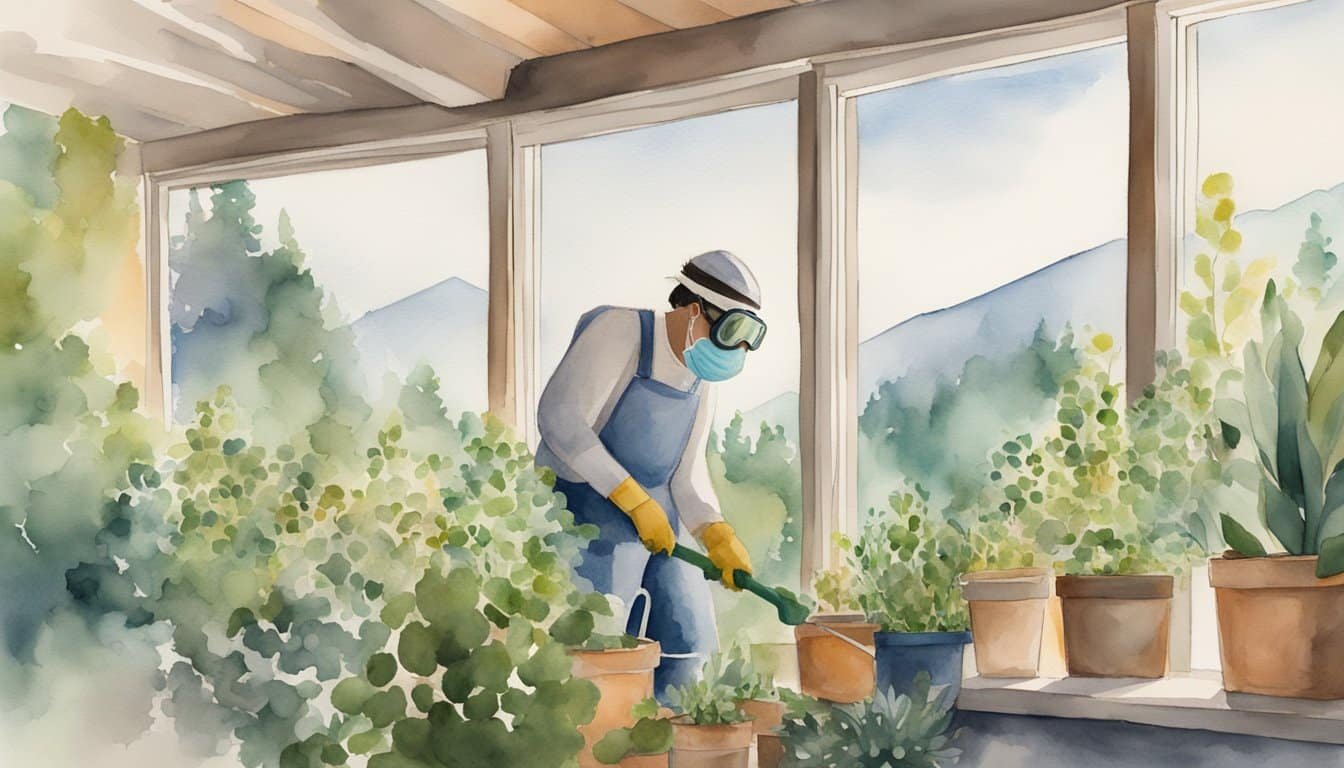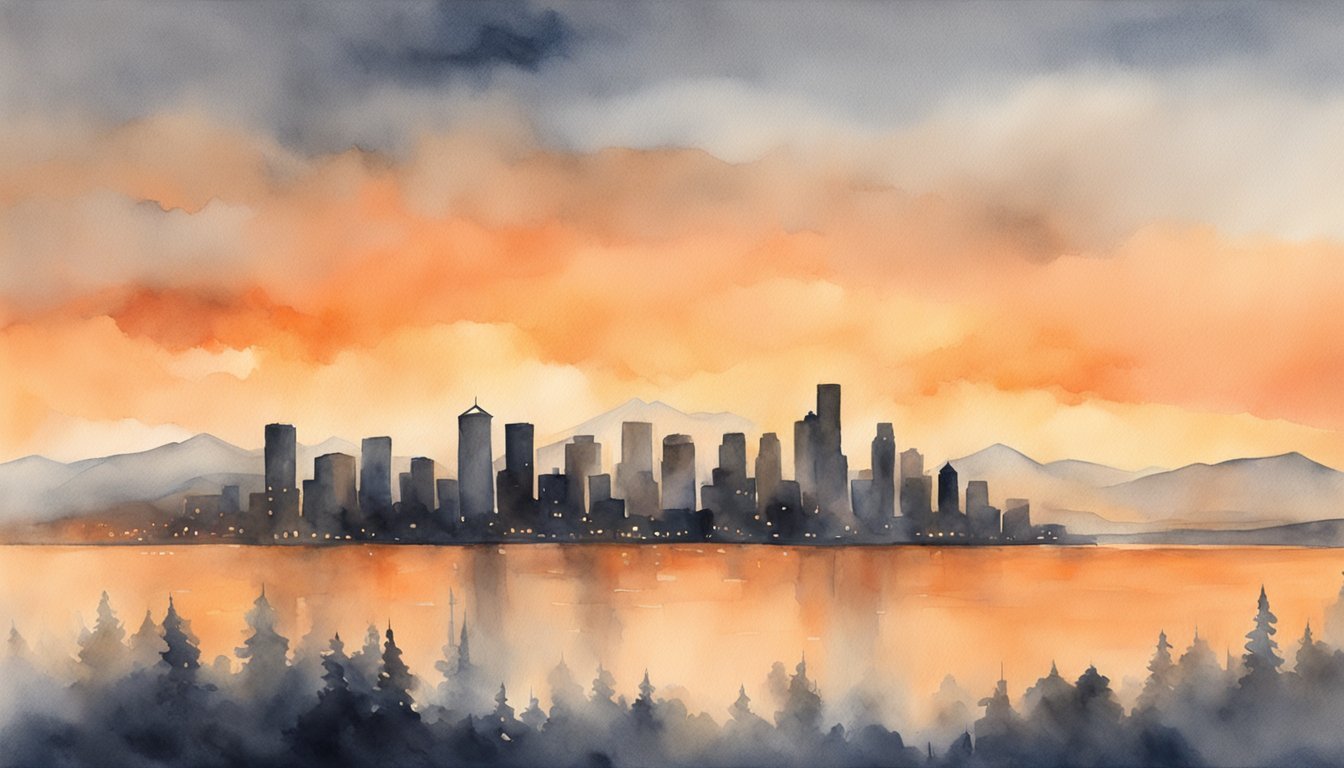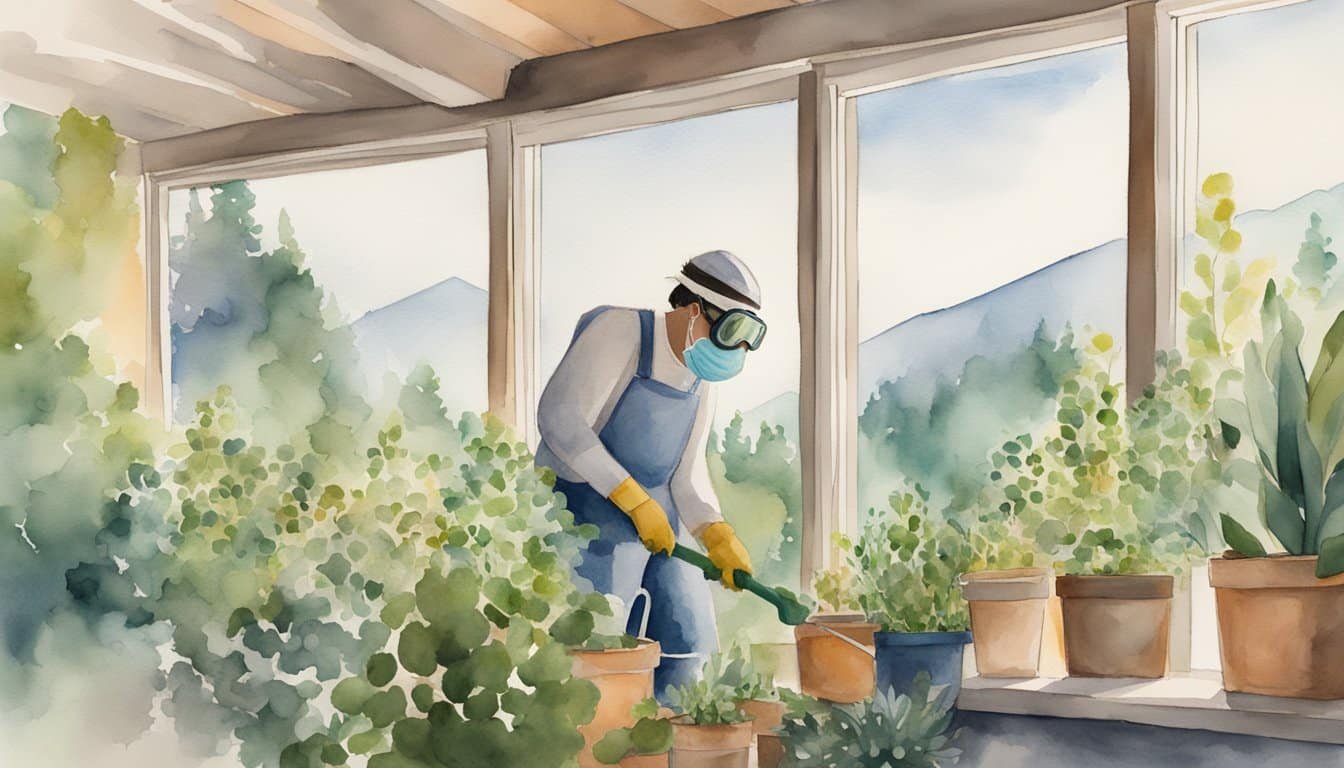Understanding Seattle’s Wildfire Smoke
Seattle faces unique challenges regarding wildfire smoke, which have significant implications for air quality and public health. This section explores where this smoke originates, its impact on health, and why Seattle is particularly vulnerable.
Origins and Impact of Wildfire Smoke
Wildfire smoke is a complex mixture of gases and fine particles produced when wood and other organic materials burn in wildfires. Across Washington and the Puget Sound region, large-scale wildfires release massive volumes of smoke that can travel hundreds of miles. This smoke carries various pollutants, including particulate matter (PM2.5), which are microscopic particles that can penetrate deep into the lungs and even enter the bloodstream. Especially during the warmer months, shifting winds can bring these intense smoke blankets to Seattle, significantly degrading the air quality.
Air Quality Measurements and Health Implications
Air quality is typically measured by assessing the concentration of pollutants like PM2.5 in the atmosphere. When wildfire smoke descends upon Seattle, these levels can skyrocket, often causing the air quality index (AQI) to reach unhealthy levels. Sensitive groups, including those with lung diseases or respiratory infections, as well as individuals with diabetes, may experience aggravated symptoms like difficulty breathing, throat irritation, or exacerbation of their conditions. It’s recommended that during such high AQI days, residents should limit outdoor activities and seek medical attention if experiencing severe health issues.
Seattle’s Specific Challenges with Wildfire Smoke
Seattle’s geography, surrounded by water and nestled among hills, can sometimes trap smoke, making it harder to disperse. This exacerbates the health risks for Seattleites, calling for more rigorous response plans. Health care providers in the area are crucial for informing and assisting individuals on how best to manage smoke exposure. It’s critical for residents to stay informed about current air quality conditions and heed advice from public health officials during these smoky periods.
For further detailed studies, the impacts of wildfire smoke on young urban children’s health are thoroughly discussed in research focusing on Seattle’s population. The predicted upsurge in forest fires is a rising concern due to the associated increase in wildfire smoke for areas like Seattle. Additional data collected at Seattle’s Beacon Hill urban monitoring site offers insights into woodsmoke toxicity, comparing emission differences between wood stoves and wildfire smoke.
Responsive Actions and Safety Measures

When Seattle faces the challenge of wildfire smoke, knowing the right actions to take and measures for staying safe can make all the difference. From the moment smoke fills the sky, getting accurate information and following trusted guidelines are crucial for protecting the health of residents.
Public Health Guidelines and Recommendations
The Puget Sound Clean Air Agency along with local health authorities, often release tailored guidelines for the public during smoke events. They emphasize the importance of staying indoors and using N95 masks for personal protection when going outside is necessary. These masks are designed to filter out particulate matter that can harm respiratory health. It’s also advised that individuals, especially those with pre-existing health conditions, keep in touch with their health care provider and follow any personalized advice given.
Air Quality Management and Monitoring
Monitoring air quality is key in understanding the severity of smoke events. The Air Quality Index (AQI) serves as a tool provided by agencies like the National Weather Service to communicate the levels of pollution in the air. Furthermore, air quality monitors have been set up across the Puget Sound region and in Western Washington to track pollutants in real-time.
For comprehensive tracking, AirNow.gov and the Fire and Smoke Map offer resources where individuals can check current air quality conditions. These platforms consolidate data from various monitoring stations and give updates that are indispensable for schools, businesses, and local governments to make informed decisions regarding closures and outdoor activities.
To stay informed on air quality in Seattle and take appropriate precautions, checking these resources regularly during wildfires is wise, as well as staying tuned for updates from local meteorology and health experts.
Weather Patterns and Wildfire Smoke Dynamics

In the intricate dance of air and fire, weather patterns play a pivotal role in determining how wildfire smoke travels and affects areas near and far from the source—including Seattle and the broader region.
Meteorological Factors Influencing Smoke Dispersion
Weather is the stage director for wildfire smoke, dictating where it goes and how it behaves. When the Cascade Mountains experience high temperatures and dry conditions, the stage is set for more intense wildfire behavior, like the notable Bolt Creek Fire. Under these conditions, particulate matter—the tiny, harmful particles in smoke—can travel long distances. On the flip side, cooler temperatures and showers can help settle and wash out smoke particles, offering a respite to affected communities.
Seattle’s weather can lead to red flag warnings, signaling a high fire risk. During such times, an onshore flow might blow in from the Pacific, pushing the smoke eastward and dispersing it across the North Cascades or even as far as British Columbia or Oregon.
Long-Term Environmental and Climate Considerations
The long game involves climate and environmental factors that alter the very nature of wildfires and their smoke patterns. As temperatures creep upward, fires in the North Cascades, near places like Newhalem, or further afield in Oregon, are burning hotter and more unpredictably than before. The Sourdough Fire was such a fire, influenced by longer, hotter dry spells.
Besides immediate weather events, climate change introduces a new level of complexity. It fundamentally shifts regional weather patterns, potentially increasing the frequency and intensity of wildfires in the Pacific Northwest. This has repercussions for wildfire smoke dynamics, as hotter and more frequent fires mean more smoke affecting air quality over wider areas for longer periods.

